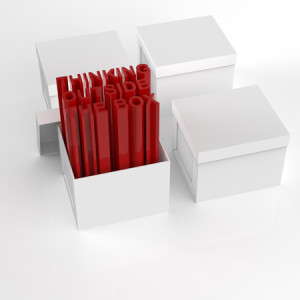Artistic power thrives on the tension between freedom and constraint. Artists constantly balance the dynamics of these seemingly contradictory states.
A recent performance of Variations on a Theme by Haydn by Johannes Brahms was a reminder of how artists use constraints—such as the melody of the St. Anthony Theme—to create something altogether new. Jazz musicians do this all of the time with improvised solos around a pre-defined harmonic structure. All artists balance skill practice—basic techniques, structures, and rules of the art form—with freedom to influence their creative expressions.
 Man built most nobly when limitations were at their greatest.
Man built most nobly when limitations were at their greatest.
~ Frank Lloyd Wright
The basic structures and rules of an art form might at first appear to be limiting, but in reality the tension between freedom and what appears to be the restricting aspects is what allows artists to express themselves fully and their art to thrive. If you make a conscious effort to consider the elegant balance between what appears to be holding you back and what you consider to be complete freedom in your own life, you will find opportunities you never thought possible. In fact, complete freedom can severely limit your creativity while constraints tend to amplify creativeness and opportunity for artistic expression. It’s always worth it to challenge yourself and work within your routines, resources, and obligations to try new things.
Art lives from constraints and dies from freedom.
~ Leonardo da Vinci
In a variation form, composers alter repeated structures by changing various aspects such as harmony, rhythm, timbre, texture, orchestration, and melody, or any combination of these elements. The result in the case of this work by Brahms is a delightful set of eight variations. If you’re unfamiliar with the work, listen to this Berlin Philharmonic performance conducted by Claudio Abbado. While Brahms followed the basic phrase structure of the stately melody, each variation is reimagined and unique.
 You can work within and alter some of the basic structures in your life, in your work environment, in your family, and in your community. Use what appear to be limiting aspects in your world—
You can work within and alter some of the basic structures in your life, in your work environment, in your family, and in your community. Use what appear to be limiting aspects in your world—
[sws_checklist]
- Identify the restrictive elements and use them to focus your thoughts.
- Be aware of feeling stuck and redirect your thoughts to consciously create momentum.
- Establish a framework around what appears to be limiting to create greater clarity.
- Realize that constraints don’t disappear; they change and grow as you progress.
[/sws_checklist]
Recognize that you might need to set even more constraints to move forward more effectively.
The more constraints one imposes, the more one frees one’s self.
~ Igor Stravinsky
You can actually “step out of” or “think outside of the box” by creating restraints. Artists know how paralyzing it can be to be faced with infinite choice about how to proceed. The restrictive aspects and elements of the art form, while still offering opportunity for numerous options, enable you to direct your thoughts and ideas more effectively. This aspect of the artistic process will help you experience greater creativity as a human being and guide you in this rapidly changing world. As Orson Welles said, “The greatest enemy of art is the absence of limitation.” Let’s take full advantage of the artistic process to live our lives with greater awareness and creative consciousness. Let’s create momentum in our lives for ourselves, our students, our children, and communities.
— Pat
